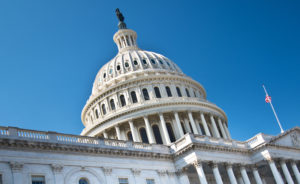
OECD report calls for agency independence to serve as a bulwark against breakdowns in the regulatory process.
The Deepwater Horizon oil spill in 2010, and the 2008 financial meltdown—whose aftershocks are still reverberating globally—have at least one trait in common: they reflected breakdowns in the regulatory process. This is not to say that the principal industry actors in both catastrophes were mere bystanders, but with better regulatory oversight, the disasters could have been prevented.
Not all regulatory failures have planetary consequences, but even smaller ones do impact individuals and communities. These failures can include instances of excessive downtime of a rail network, undue electricity rates that favor the energy provider and penalize the public, an unstable regulatory environment that discourages capital investment in more reliable utility equipment, and toxic waste disposal practices that fly under the radar but put the health of a local community at risk. These are all examples in which, somewhere along the way, regulators and those they regulate have failed to protect the public interest.
Different stakeholders—whether the regulated industry, government, politicians, consumers or other interest groups—have powerful incentives to influence, or capture, regulatory policies. Mechanisms and safeguards must be in place to shield the regulator from this pressure so that decisions can be made that systematically reflect the public interest. It is not a matter of being defensive, but rather of being open, confident, and ready to engage. The public needs regulators to be independent just as they need judges and sports referees to be independent. That is, a regulator’s decisions and activities should be objective, impartial, consistent, and expert.
The danger of capture is all the more present due to the nature of the relationship between the regulator and the regulated. Independence cannot come at the price of accountability or engagement, and regulators need to keep their fingers on the pulse of the market through interaction with industry and consumers. Autonomy should still be compatible with maintaining helpful feedback loops between the regulator and its governmental executive overseers.
Given the challenging context within which regulators operate, the question is how to limit undue influence in practice and create a strong culture of independence. Independence is not a static state achieved once and for all by statute, but an active objective that the regulatory agency must be prepared to approach proactively and continuously. While institutional design is one part of optimizing independence, it is not sufficient. A regulator can be part of a ministry and yet be more “independent” than a regulator in a separate body.
The life of a regulatory agency is fraught with potential entry points for undue influence. These entry points—or “pinch points”—are specific to the regulator’s environment and are amplified when two or more events occur at the same time. An example might be a political election coinciding with a rise in crude oil prices and a change in the head of the agency. Successfully navigating these powerful forces can be accomplished with good governance and clear regulatory policies addressing such issues as agency finances, staff behavior, the appointment and removal of leadership, the way in which agency intersects with political cycles, and the interaction with the various actors in the regulatory sphere.
The Organization for Economic Co-operation and Development (OECD) has set out to understand how regulatory agencies around the world are structured to be protected from undue influence. The OECD has developed a unique dataset of the formal arrangements for independence of regulators across 33 OECD countries, complemented by detailed case studies showing what holds regulators accountable for their performance.
A follow-up study has filled in many of the gaps in our understanding of how de facto independence plays out in the daily life of regulators, differing from other research on independence, which tends to focus only on formal (de jure) institutional arrangements. In this latter study, the chief concern was how, and how well, regulators are configured to deal with the day-to-day challenges of independence. Questions were asked of regulators on a number of dimensions of de jure and de facto independence. Forty-eight regulators from around the world participated, representing institutional arrangements including formally independent regulatory institutions, ministerial regulators, and single- and multi-sector regulators.
A key conclusion of this work is that regulatory independence is not an end in itself, and that it should be seen as a means of ensuring effective and efficient public service delivery by the different market players. Developing a culture of independence is just another way of saying nurturing better performance. Citizens spend little time worrying about regulatory institutional arrangements and the relation of the regulator to the ministry. They will, however, react when cries of unethical behaviour fill the airwaves, when network services are overpriced, or when the trains do not run on time—not to mention when there are large, systemic shocks that alter life trajectories. Ensuring performance, while engaging fully with pressures from all sides, requires the existence of governance structures aimed at cultivating a culture of independence. This is the best way of preventing tomorrow’s regulatory failures, big and small alike.
Filippo Cavassini and Anna Pietikainen, Policy Analysts in the OECD’s Public Governance and Territorial Development Directorate, contributed to this essay. The OECD’s website contains links to its latest work on the independence of regulators and their protection from undue influence.





